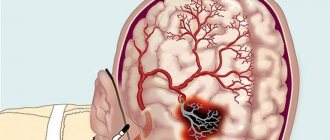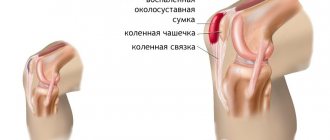Liver cancer is a malignant tumor that quickly grows in size and metastasizes. It may be primary or represent metastases from other organs. The disease is asymptomatic for a long time or manifests itself with nonspecific symptoms.
Yusupovskaya's oncologists diagnose liver cancer using the latest research methods. To treat the disease, the most effective antitumor drugs are used, which have a minimal range of side effects. Surgeons use innovative surgical techniques. Medical staff provides professional patient care.
Causes
Primary liver cancer occurs on average 30 times less frequently than secondary liver cancer. As a rule, a malignant liver tumor occurs against the background of the presence of another oncological process in the body and its metastasis (for example, cancer of the uterus or stomach with metastases to the liver). Liver cancer occurs as often at 30 years old as at 50 and 60 years old - this disease has no age categories. The liver is susceptible to active metastasis due to intense blood circulation in this organ. There are a number of risk factors that influence the formation of malignant neoplasms in the liver:
- chronic inflammation of the liver. Cirrhosis, hepatitis C and B significantly increase the risk of developing cancer in the liver;
- alcoholism. Uncontrolled alcohol consumption destroys liver cells, providing favorable conditions for the formation of malignant neoplasms;
- poor nutrition and, as a result, excess weight. Excessive fat accumulation and slow metabolism increase the risk of cancer. The liver ceases to cope with the volumes of consumed hydrogenated fats and gradually loses its functions;
- hemochromatosis. This diagnosis involves a disorder of iron metabolism in the body, as a result of which its accumulation occurs in the gastrointestinal tract;
- heart failure;
- parasite infection;
- diabetes;
- syphilis;
- cholelithiasis;
- exposure to radiation and oncogenic viruses;
- disruption of the endocrine, lymphatic and circulatory systems;
- disturbances in the functioning of the biliary tract;
- accumulation of the contrast agent Thorotrast in the body. It can persist in the body for many years and eventually cause liver tumors;
- taking medications that have a toxic effect on the liver;
- smoking. Smoking negatively affects human health, and especially the functioning of the liver;
- elderly age. With age, organs stop working as well as in youth - the metabolic rate decreases and the likelihood of developing cancer becomes higher;
- burdened heredity.
Typically, malignant liver tumors develop under the influence of several causes and provoking factors.
Make an appointment
Causes of formation of a malignant tumor in the liver
Doctors have not yet compiled an accurate list of possible provocateurs of the disease. Therefore, at present we can name only possible reasons why liver cancer develops. Among them:
- Hereditary predisposition. This is one of the reasons that is one of those that doctors talk about with more or less confidence. A person - both men and women - has a higher risk of developing the disease if one of his close blood relatives has or has had cancer;
- Coincidence. This is a whole list of circumstances that have been “layered” on top of each other. The list includes poor nutrition, bad habits (addiction to alcohol, smoking), chronic liver diseases, living in unfavorable environmental conditions;
- Hard work, including interaction with harmful substances and chemicals. According to medical data, the appearance and growth of tumors is promoted by organic chlorine-containing pesticides, polychlorinated biphenyls, and chlorinated hydrocarbon solvents;
- Severe liver diseases. These include, for example, cirrhosis. With this disease, various complications develop, in particular, hepatorenal syndrome. Such complications can also contribute to the development of cancer;
- Damage by parasites. The presence of some of them in the body significantly increases the risk of disease, weakening the organ, disrupting its functions, contaminating it with waste products;
- Excess iron in the body;
- Products of plant origin grown with the use of growth stimulants and pesticides increase the risk of oncology, including liver cancer.
Even organic compounds consumed in large quantities with food can provoke disease. An example of such compounds are those found in peanuts.
Symptoms
In the first stages, liver cancer is practically asymptomatic. The patient may be concerned about weakness and fatigue, but this, as a rule, does not raise suspicions of liver cancer. Basically, the tumor begins to appear after spreading beyond the liver or metastasizing to other organs. The main clinical manifestations of liver cancer are:
- pain in the area of the right hypochondrium;
- increased body temperature;
- a feeling of heaviness that worsens after eating;
- causeless weight loss;
- decreased appetite;
- yellowness of the skin and sclera;
- nausea, vomiting, belching of air;
- tendency to diarrhea or constipation;
- palpable hard nodule in the liver area;
- an increase in abdominal volume due to the accumulation of pathological fluid;
- light colored stool;
- dark color of urine;
- anemia;
- skin itching;
- nosebleeds or gastrointestinal bleeding.
In order to establish a diagnosis as early as possible, you should contact a gastroenterologist when the first signs of liver dysfunction appear. After the examination, the patient will be consulted by an oncologist. Early diagnosis of malignant liver tumors allows for adequate therapy that increases life expectancy.
To win means to fight
Oncology is a terrible diagnosis, almost a death sentence. Many patients despair without even starting to fight it. And yet, neither pharmacogenetics nor new branches stand still. Today, other things such as trizloacetic acid in combination with alcohol are called upon to combat formations. Due to their use, the metabolism between organs and the tumor is disrupted, thereby stopping cell growth.
Each of the applicable methods used in our time is effective in its own way, since they are aimed at exterminating cancer cells and do not allow them to deseminate. In addition, they allow you to preserve the organ, even if it is divided.
Symptoms in women
Symptoms of liver cancer in women are no different from general symptoms. Doctors say that the danger for females lies in the later manifestations of the disease. Characteristic changes for women are:
- the appearance of male pattern hair;
- deepening of the voice;
- decreased libido;
- lumps in the chest and armpits.
List of sources
- Chekmazov I.A., Ivanikov I.O., Sapronov G.V., Kirillova N.Ch., Vinogradova N.N. Liver cancer: etiology, pathogenesis, results of long-term clinical and epidemiological observation. Evidence-based gastroenterology. 2019;8(1):5-15. https://doi.org/10.17116/dokgastro201980115
- Merabishvili V.M. Merabishvili E.N. Chepik O.F. Epidemiology of liver cancer. Morbidity, mortality, dynamics of histological structure // SIBERIAN JOURNAL OF ONCOLOGY. 2015. No. 2. P. 5–14.
- Breder V.V. Risk factors for the development of hepatocellular cancer in oncological practice. Experience of the Russian Oncological Research Center named after. N. N. Blokhina. /Experimental and clinical gastroenterology. - 2021, 4. pp. 4-12.
- Semendyaeva M.I., Merkulov I.A., Pastukhov A.I., Gaidasheva E.V., Lesnyak V.N., Shutova O.V. Hepatocellular carcinoma - today's day / Clinical practice, 2013. - No. 2, pp. 35-49.
- Kucheryavyi Yu.A., Oganesyan T.S., Stukova N.Yu. Hepatocellular carcinoma: the view of a general practitioner / Consilium Med. 2011. - No. 1, pp. 38-45.
Classification
Primary liver cancer mainly develops from hepatocytes - liver cells, or from bile duct cells. Experts distinguish several types of liver tumors:
- carcinosarcoma;
- sarcoma;
- liver lymphoma. Occurs due to the proliferation of atypical lymphocytes. This neoplasm is distinguished by its rapid growth and spread of metastases to distant organs;
- Hepatocellular carcinoma is an extremely rare form of tumor in the liver. The main cause of this type of cancer is cirrhosis or hepatitis B and C;
- cystadenocarcinoma. The structure of this neoplasm is similar to the structure of a cyst. The main manifestations of the disease are severe, sharp abdominal pain and dizziness. Cystadenocarcinoma tends to grow quickly, as a result of which it often causes compression of neighboring internal organs;
- hepatoblastoma is a tumor characteristic of childhood. Characterized by weight loss with a disproportionate increase in the abdomen;
- cholangiocellular liver cancer (portal liver cancer). A rather rare form of cancer associated with a mutation in the cells of the bile ducts. It is usually detected in the later stages, when treatment no longer brings results;
- angiosarcoma. Liver cancer is the most difficult and practically untreatable cancer. Metastases from angiosarcoma spread very quickly, preventing doctors from stopping or slowing down their growth. The reason for the appearance of this tumor is prolonged contact with poisonous and toxic substances in production;
- liver melanoma. One of the most severe liver tumors. Mainly occurs due to metastasis of another tumor or due to the development of melanoblastoma;
- fibrolamellar carcinoma. This liver tumor manifests itself as severe pain in the epigastrium and upper abdomen if the tumor has grown to a size of 20 centimeters or more. Treatable in early stages;
- undifferentiated sarcoma. In this case, the liver tumor grows and develops rapidly, spreading metastases to neighboring organs. It is often discovered in childhood and has virtually no treatment.
Timely diagnosis ensures a quick diagnosis, which is extremely important for cancer. You should not put off going to the doctor, because this is what can save your life.
Make an appointment
Risk factors
There are several known risk factors for liver cancer. Thus, a direct relationship has been established between hepatocellular carcinoma and chronic viral hepatitis. Up to 80% of people with chronic hepatitis B and C develop liver carcinoma within 20 years of infection. It is precisely because of the high prevalence of these viruses in Asian and African countries that primary liver cancer occurs there several times more often than in Europe and the USA.
In Russia, the highest incidence of hepatic cell cancer is recorded in Western and Eastern Siberia. According to statistics, the average age of patients ranges from 50 to 65 years, and this tumor is more common in men.
Often, a malignant tumor develops as a result of cirrhosis, a pathological condition in which normal liver tissue is replaced by fibrous connective tissue. In turn, the causes of cirrhosis are different:
- Chronic viral hepatitis B and C.
- Non-alcoholic fatty liver disease is a fairly common disease, the risk of which is increased in people who are overweight.
- Primary biliary cirrhosis is a disease in which the bile ducts are destroyed, as a result, the outflow of bile is disrupted, and liver tissue is affected.
- Hereditary hemachromatosis is a hereditary pathology in which the body absorbs too much iron from food, and it is deposited in various organs, including the liver.
- Excessive drinking leads to alcoholic hepatitis and then to cirrhosis.
Other risk factors:
- Excess body weight. An increased likelihood of developing non-alcoholic fatty liver disease may play a role here.
- Diabetes mellitus type II. Such patients are often overweight.
- Some rare diseases: tyrosinemia, alpha1-antitrypsin deficiency, porphyria cutanea tard, glycogen storage diseases, Wilson-Konovalov disease.
- The use of anabolic steroids.
- Exposure to certain toxic substances: aflatoxin (produced by a fungus that affects wheat, corn, ground nuts and other products), vinyl chloride (used to make some plastics), arsenic (well water may be contaminated).
- Smoking. For people who quit smoking, the risk decreases, but is still higher than for people who have never smoked.
There is evidence that there appears to be a small association between taking hormonal contraceptives and a slightly increased risk of liver cancer. But serious research that could be completely trusted has not been conducted on this topic, so it is not yet possible to say anything unambiguously.
Angiosarcoma of the liver
An extremely aggressive malignant neoplasm that occurs upon contact with toxic chemicals (arsenic, copper, vinyl chloride) and upon exposure to radioactive radiation - liver angiosarcoma. Often, tumor growth begins against the background of accumulation in the body of Thorotrast, which was previously taken as a contrast agent when performing x-ray studies.
The symptoms of angiosarcoma are non-specific - the patient may experience abdominal pain, bloating, fever, loss of weight and appetite. During palpation, a compaction may be felt; during auscultation, the doctor may hear characteristic noises. It is difficult to establish a diagnosis at an early stage of development of the pathological process, since the onset of the disease is not accompanied by clinical signs of a malignant tumor.
Angiosarcoma is detected using the same methods as other types of liver malignancies. X-rays show thorotrast in the liver and spleen. During diagnostic laparoscopy, surgeons perform a biopsy and send areas of pathologically altered tissue for histological examination. Since angiosarcoma is detected at a late stage, patients are given palliative care in a hospice setting.
Pathogenesis
Primary liver cancer develops against the background of chronic inflammation of hepatocytes and the development of a pathological process in the liver parenchyma, caused by the damaging effects of viruses. The inflammatory process is accompanied by repeated damage to liver cells, triggering regeneration/fibrosis processes, which ultimately leads to liver cirrhosis . Against the background of high cell turnover, the likelihood of various genetic disorders (mutations, deletions, rearrangements, amplification and aneuploidy of genes) sharply increases, which contributes to the activation of oncogenes and the suppression of suppressor genes. The main histological changes are directed through hyperplastic nodes from foci of hepatocyte regeneration with the formation of areas of dysplasia , which are tumor precursors.
Liver hemangioendothelioma
The clinical picture of liver hemangioendothelioma does not differ from other types of tumors. At first, the disease is asymptomatic, but later characteristic signs of liver cancer appear - yellowing of the skin, fever, weakness, fatigue, sudden and rapid weight loss. Often this disease entails particularly extensive internal bleeding. Scientists attribute this to damage to neighboring blood vessels by neoplasms and deterioration of blood clotting.
Effective methods of treating hemangioendothelioma are:
- radiation therapy. This technique is applied to primary pathology; a repeated course of radiation therapy in case of relapse is ineffective;
- surgical intervention. It is the most effective method of treating liver tumors, as it allows you to eliminate the source of the disease. However, surgery is not a guarantee of complete recovery, since metastases cannot be removed surgically;
- chemotherapy. This method involves the use of drugs that destroy malignant cells. Chemotherapy is fraught with a deterioration in the patient’s general well-being and is mainly used in cases of inoperable recurrent tumor.
Doctors at the Yusupov Hospital Oncology Clinic use only the most modern treatment methods in their practice, which can improve the patient’s quality of life.
Metastases
Metastases are the main danger of any cancer, since they are almost impossible to stop or prevent their spread.
Metastases of primary liver cancer can spread to the stomach, brain, lungs, esophagus, veins and arteries, heart muscle, blood vessels, bones and spine. Metastases from the liver enter the body in the following ways:
- through lymph flow;
- through the circulatory system;
- through growth beyond the liver and damage to neighboring tissues and organs.
Unfortunately, metastases occur in 40% of liver cancer cases and often affect vital organs, which are subsequently extremely difficult to treat.
Secondary cancer
In most cases (about 90%) liver oncology is secondary changes - metastasis. Due to the fact that blood from the entire body flows through the liver through the artery and portal vein.
More often than others, metastatic changes occur in the liver due to tumors located in the pancreas (about half of the cases), large intestine - from 20 to 30% of cases, stomach - 30%, esophagus - 25% and mammary gland - 15%.
Do you want to know the cost of cancer treatment abroad?
* Having received data about the patient’s disease, the clinic representative will be able to calculate the exact price for treatment.
Complications
The uncontrolled course of liver cancer is dangerous due to the occurrence of complications. Their appearance depends on many factors. Possible complications include:
- bleeding from the tumor;
- suppuration of the tumor focus;
- impaired outflow of bile due to compression of the bile ducts;
- circulatory disorders due to compression of the abdominal organs by large tumor sizes;
- ascites.
The listed symptoms require immediate diagnosis and surgical intervention. Without this, death is possible.
Make an appointment
Diagnostics
Oncologists at the Yusupov Hospital conduct a comprehensive examination that allows you to quickly establish a diagnosis of liver cancer and verify the type of tumor. It includes the following studies:
- Complete blood count – the number of leukocytes and erythrocyte sedimentation rate increases;
- Biochemical blood test - the level of bilirubin, ALT, AST increases;
- Determination of the level of specific tumor antigen (tumor marker) ACE.
Using ultrasound, which is performed using expert-class equipment with high resolution, the location and size of the tumor are determined. Ultrasound is used both for primary diagnosis and for the purpose of dynamic monitoring of the condition of the tumor.
Magnetic resonance imaging and computed tomography are performed to clarify the size of the formation, the degree of invasion into surrounding tissues and organs, and distant metastases.
Laparoscopy is performed to clarify the spread of the tumor process. During the examination, the surgeon performs a biopsy - sampling tissue sections for histological examination.
Stages
Determining the stage of the disease using clinical, instrumental and laboratory tests allows doctors at the oncology clinic to develop optimal tactics for patient management.
- In the first stage of liver cancer, the size of the tumor does not exceed two centimeters. There are no clinical symptoms. In some cases, patients experience increased fatigue and discomfort in the right hypochondrium.
- At the second stage of the disease, the size of the tumor reaches five centimeters. Invasion of atypical cells into blood vessels is observed. Patients are bothered by heaviness and dull aching pain in the right hypochondrium. As the pathological process progresses, the pain intensifies.
- The third stage of liver cancer is accompanied by the spread of the tumor to other organs and tissues. Severe pain syndrome forces the patient to see a doctor.
- Stage four liver cancer is characterized by multiple metastases to other organs. Due to increased pressure in the portal vein, the veins on the anterior wall of the abdomen and chest dilate. Patients are concerned about severe pain and constipation. Their abdominal volume increases due to the accumulation of fluid in the abdominal cavity, body weight decreases, and emotional lability occurs.
How does a tumor make itself known?
An oncological disease can be not only primary, but also secondary, which is diagnosed much more often. In the latter case, cancer cells enter the organ through the lymphogenous or hematogenous route from a lesion already present in the body. This is how metastases appear. However, secondary and primary liver cancer have the same symptoms. It is also noteworthy that the symptoms of liver cancer in women and men are also the same.
The sooner the disease is detected, the greater the patient’s chances of recovery. Therefore, it is so important to identify signs of liver cancer at an early stage of tumor development. Unfortunately, at this stage the clinical picture of the disease is not clearly defined, and therefore the patient may miss valuable time.
At the initial stage
During this period, liver cancer has the following signs and symptoms:
- feeling of heaviness in the right hypochondrium;
- nausea, vomiting;
- digestive disorders such as constipation or diarrhea;
- decreased appetite;
- general weakness and loss of strength;
- aching, dull pain radiating under the shoulder blade;
- yellowness of the skin and outer membranes of the eyes.
The first symptoms, which in addition to the above should alert the patient, are a slight increase in body temperature and a feverish state. This reaction of the body is due to the mobilization of its defenses to fight the tumor. In addition, the first signs of hepatocellular cancer include unreasonable weight loss, as well as increased concentrations of adrenal hormones in the blood.
At a late stage
At this stage, the oncological process is complicated by metastases, which can affect, among other things, the lungs, bones and spine. The liver is greatly enlarged in size; when palpating the peritoneum, in half of the cases a painful large node is felt. The tumor occupies most of the organ and prevents its proper functioning. There are frequent episodes of tumor growth into the diaphragm.
Symptoms of liver cancer at an advanced stage require more detailed consideration. The disease in most cases manifests itself as follows:
- constant pronounced pain;
- malaise and chronic fatigue;
- anemia, dizziness, often accompanied by fainting;
- severe weight loss, even to the point of exhaustion;
- swelling of the legs, often preventing walking;
- accumulation of fluid in the abdominal cavity, or ascites;
- swollen lymph nodes;
- regular nosebleeds;
- manifestation on the body of “spider veins”, or telangiectasia.
Symptoms of the disease such as yellowness of the skin and mucous membranes and fever begin to appear more strongly.
Important: a serious complication of the disease is intra-abdominal bleeding, which requires immediate hospitalization due to the threat of death.
Some signals do not always indicate an oncological process in the body. Liver adenoma is also characterized by epigastric pain and nausea. Such a benign liver tumor can often be palpated by palpation of the peritoneum. With this disease, the patient also remains at risk of internal bleeding, which is due to the possible rupture of the tumor. Differential diagnosis is carried out by the attending physician.
Treatment
Doctors at the Yusupov Hospital Oncology Clinic take an individual approach to the choice of treatment methods for each patient diagnosed with liver cancer. The complex of treatment measures depends on the following factors:
- location of the pathological focus;
- stage of tumor development;
- presence or absence of metastases;
- patient's condition;
- accompanying illnesses.
The decision on the need and expediency of a particular method of therapy is made after a thorough diagnosis. Treatment for liver cancer includes:
- Medications. The active ingredients of medications have a toxic effect on cancer cells. In this case, healthy tissues are not damaged. Chemotherapy for liver cancer has no curative effect.
- Radiation therapy. Local impact on the tumor leads to a decrease in its size. As a result, the pain syndrome decreases. Radiation therapy is used at all stages of liver cancer treatment.
- Ablation. The essence of the method is the introduction of ethanol into the tumor formation. Then the pathological focus is exposed to microwave radiation. Ablation is effective for liver cancer that is less than 3 cm in diameter.
- Vascular embolization. Blood circulation in the tumor area is disrupted due to the introduction of special drugs into the vessels. As a result, the formation decreases in size. Vascular embolization is effective for tumors up to 5 cm in diameter. This method is often used in conjunction with other types of liver cancer treatment.
- Surgical intervention. In the presence of operable cancer, tumor removal or liver transplantation is indicated.
Stages and grades of liver cancer
Liver cancer stage I
At this stage of the disease, the tumor has just formed and has not had time to penetrate the vessels. Its size may vary. But in general, stage I tumors affect no more than a quarter of the liver. This is largely why it is so difficult to diagnose cancer at this stage. All symptoms are mild, the patient may complain of weakness and fatigue. In addition, a stage I malignant tumor does not interfere with the normal functioning of the liver. It is often detected when other diseases are suspected. But during the examination, cancer is confirmed.
If you managed to diagnose the disease at stage I, this is a great success. The treatment will be most effective and the likelihood of positive dynamics will be greater. Therefore, patients who are at risk, for example, patients with viral hepatitis, alcohol abusers, smokers, are recommended to undergo examinations as often as possible to detect liver cancer cells.
Liver cancer stage II
At this stage, the tumor increases in size and penetrates the blood vessels. Symptoms of the disease are more pronounced. The patient may periodically experience pain in the abdominal area during physical activity. Malignant tumors take different forms.
Liver cancer stage III
It is divided into several stages. The first of them is designated 3A in medicine and implies that the tumor has managed to affect the hepatic or portal vein. There may be several malignant formations at this stage, each of them being significant in size. Thanks to this, a specialist can diagnose liver cancer through an examination. After all, a large tumor leads to compactions that are noticeable externally.
At stage 3B, the connection of malignant cells with organs located next to the liver occurs. The only exception is the bladder. Another option is also possible, when the tumor attaches to the outer lining of the liver.
If malignant cells have affected not only the organ itself, but also the lymph nodes, this indicates that stage 3C has occurred. In this case, the tumor also affects other organs of the body.
Liver cancer stage IV
This stage is considered the most difficult among all possible. The tumor has already managed not only to affect most of the liver, but has also spread as metastases throughout the body, affecting other organs. This happens through the bloodstream.
The maximum life expectancy for patients with stage IV liver cancer is 5 years. However, such cases are rare. Most often, with rapid progression of the disease, death occurs after a few months.
Effective treatment of liver cancer at this stage is almost impossible. Doctors only try to prolong the patient’s life by maintaining the functioning of the body’s systems longer and slowing down the proliferation of malignant tumor cells, which occurs uncontrollably. Chemotherapy and radiation therapy are used for this. Surgical intervention at stage IV cancer is already pointless.
It is often diagnosed during the patient’s initial visit to the doctor. This is due to the asymptomatic development of the tumor. It begins to bother the patient only in the final stages, when it is no longer possible to help him.
On the subject: Immunity by 243% - a new generation of immunomodulatory agents
Nutrition
The patient's condition improves with a special diet. The cooks at the Yusupov Hospital prepare dishes from high-quality products that do not contain nitrates, GMOs or carcinogenic food additives. In case of uncontrolled weight loss, increase daily caloric intake at the expense of protein products. When preparing dishes, preference is given to gentle culinary technologies: boiling, stewing, steaming and grilling, baking in the oven.
The following foods are excluded from the patient's diet:
- store-bought sauces;
- smoked meats and pickles;
- rich broths;
- margarine and other heavy fats;
- fresh baked goods;
- alcoholic drinks;
- strong tea and coffee.
Diet for liver cancer
Nutrition plays an important role in the fight against a serious disease such as cancer. It should be as balanced as possible and not overload the liver. It is recommended to eat in small portions as often as possible.
All products can be divided into three groups. The first includes those that are considered beneficial for patients with liver cancer. These include dairy products, cereals, carrot and beet juice, most fruits and vegetables, rice, buckwheat, and millet. From cereals you can make soups that are very nutritious, but at the same time easy to digest. Carrot juice has a positive effect on liver function.
In limited quantities, you can consume foods that belong to the second group. Among them were vegetable and fruit juices, cottage cheese and butter, tea, eggs and butter. Patients with liver cancer often have protein deficiency. To compensate for the lack of this important element, you need to eat meat and fish. Preference should be given to low-fat varieties, for example, veal, chicken, cod, pike perch. Herring will increase your appetite, as will sauerkraut. This is especially important for patients with cancer, who in most cases have no appetite.
The third group includes all products harmful to patients. These are alcohol, coffee, carbonated drinks, margarine, sugar, fatty meat. You should discard any products in the preparation of which preservatives and flavor enhancers, hot spices and other additives were used.
Dishes must be steamed or oven-cooked. Food can be boiled or stewed, but nothing should be fried in oil, so as not to create additional stress on the liver. For those who cannot refuse fatty sweets - cakes, pastries, you can replace them with marshmallows, marshmallows or marmalade. However, eat such food in small quantities and not too often. When swelling occurs, it is necessary to reduce water intake and avoid salt. If the patient is vomiting, on the contrary, you should increase the amount of fluid you drink.
Forecast
Since liver cancer is often diagnosed at the final stage of the tumor process, the prognosis for recovery is pessimistic in most cases. Palliative therapy is aimed at reducing the severity of symptoms of the disease and alleviating the general condition. In the presence of concomitant pathologies, death occurs 6 months or 1 year after diagnosis. The average life expectancy after the onset of this disease is about 2 years with properly selected effective treatment.
Prevention
You can reduce your risk of developing liver cancer by following the following medical recommendations:
- exclude alcoholic drinks;
- control weight;
- observe safety precautions when working with toxic substances;
- avoid unprotected sexual intercourse;
- do not take drugs;
- apply tattoos or make-up only in trusted salons;
- Vaccine against hepatitis B on time;
- undergo an annual preventive examination with a doctor.
Treatment of liver cancer at the Yusupov Hospital is prescribed by qualified oncologists depending on the nature of the tumor, its type and stage. All therapeutic procedures are carried out under the strict supervision of medical personnel, ready to provide assistance at any moment. In our clinic you can undergo any types of examinations using professional modern equipment.
Make an appointment
Folk remedies
Important! Traditional medicine does not recommend self-medication for liver cancer, and allows these treatments only as supporting agents for the main methods of therapy.
Herbal Collection “Monastic 16 herbs” from Fr. George. Make a collection by mixing 35 g of medicinal sage, 25 g of nettle, 20 g each of string, rose hips, bearberry and immortelle, 15 g of wormwood and 10 g each of chamomile, yarrow, calendula, motherwort, thyme, linden flowers, birch buds, marshweed and buckthorn bark.
Grind everything thoroughly and 6 tbsp. spoons of vegetable raw materials, pour 2.5 liters of boiling water into an enamel bowl. Place the pan over low heat and cook for 3 hours, until the volume of the folk remedy is reduced by half. Afterwards, set the broth aside to infuse and cool, then strain and place the product in the refrigerator.
You need to drink 1 tbsp. spoon 3 times a day, warm, 1 hour before meals. The course of treatment is 70 days, after which a break is taken for 15 days and after a re-examination, if necessary, the course is repeated. In severe cases, drink the drug for 1 year. This remedy can also be used for preventive purposes - 30 days, 2 times a year, because it has the property of purifying the blood. At this time, meat, white yeast bread, hot and spicy foods are excluded from the diet.
Hemlock. The following remedy is used for cancer of the liver, esophagus, stomach, breast and other localizations. To prepare a healing remedy, you need to pour 500 ml of vodka into a 3-liter jar and fill the container 1/3 with chopped (not minced) hemlock shoots. Then fill the jar to the top with vodka, close the lid tightly and refrigerate for 16-18 days, shaking the jar occasionally.
In case of emergency, you can start taking the product on the 5th day, however, to increase its effectiveness, the product needs to infuse. You need to drink the product in the morning, on an empty stomach, as follows: 1 day – 1 drop of tincture per glass of water, 2nd day – 2 drops per glass, 3rd day – 3 drops and so on up to 40 drops per 1 glass of water, after which the dose is reduced by one drop daily – 40, 39, 38 and up to 1st. And so repeat 2-3 circles, i.e. turn out to be 3 times 79 days.
Cabbage and beet juice. In the presence of malignant tumors or after radiation exposure, it is recommended to drink cabbage juice in unlimited quantities, as well as beet juice in doses. Before using cabbage juice, it is recommended to leave it in the refrigerator, which will lead to it losing its nauseating effect.
Vitamin B17. Apricot kernels contain a large amount of amygdalin, also known as vitamin B17, which, according to traditional healers, has an antitumor effect. For medicinal purposes, you need to eat 10 kernels daily.
Otto Warburg, a two-time Nobel Prize winner, scientifically proved that folk remedies can help in the treatment of liver cancer and added several effective remedies to his practices:
- Pure propolis is the simplest method of combating and preventing pathology. You need to use 15 grams of pure propolis every day. The volume is divided into equal parts and applied an hour before meals three times a day. The course of therapy is 3 months. You can get the effect of treatment with this method only at stage 1 of cancer.
- Oat decoction - gives results after 1-2 months of systematic use, depending on the stage of cancer. To prepare, place 1.5 cups of oats in a saucepan and add 2 liters of water. Bring to a boil over medium heat, turn it to low and cook for 20 minutes. After cooling, divide the liquid into 3 parts and drink three times a day an hour before meals. A fresh drink is prepared every day.
- Celandine tincture - prepared from the root. 1 kg of the plant needs to be ground and the juice squeezed out from the resulting mixture. Add the same amount of vodka to 500 ml of juice and leave in a glass container for 20 days. Take the medicine 1 tsp. 4 times a day 30 minutes before meals. The course of treatment is 2 weeks.
- Chaga infusion - the recipe has a lot of positive reviews. To prepare, you need to grate 100 grams of chaga (birch mushroom) and pour the mixture with 5 glasses of chilled water. Leave in the jar for 2 days, filter the liquid. This infusion can be stored for up to 4 days. Drink 200 ml three times a day, after the same amount of time. You need to drink 30-60 minutes before a meal. The course of therapy is 30 days, and during treatment do not use penicillin or glucose.
Folk remedies can give positive results, but they are not a panacea. No prescription can replace surgery and completely get rid of the tumor.










